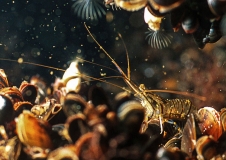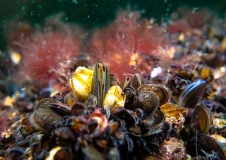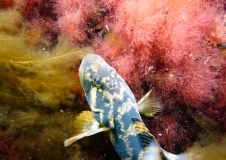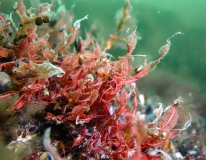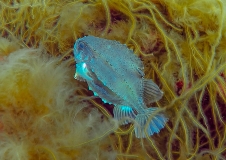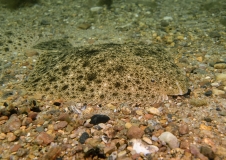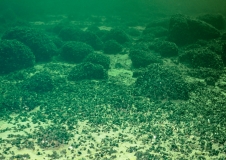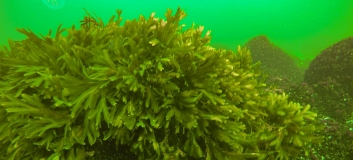The Adler Ground HD site – Area II
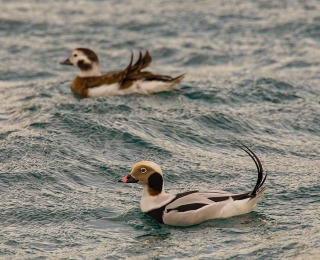
Facts Adler Ground (HD site) – Area II of the complex area
|
Fact sheet |
HD site |
|
|
Habitat types |
Sandbanks |
approx. 87 km² |
|
|
Reefs |
approx. 110 km² |
|
Species/Numbers |
Harbour porpoise (Phocoena phocoena) |
> 10 |
|
|
Grey seal (Halichoerus grypus) |
Recorded |
Important characteristics of Area II
Large algae can be found in the light-flooded, shallower areas of the Adlergrund. Sandy areas alternate with mussel banks and ensure species-rich communities.
In the flat areas in water depths of up to about 10 m, the reefs are populated by macroalgae such as toothed wrack (Fucus serratus), dead men's rope (Chorda filum) and clawed fork weed (Furcellaria lumbricalis).
The deeper flanks (10 m to 20 m deep) are dominated by the blue mussel (Mytilus edulis) which settles on the boulders and can form entire blue mussel banks on the sand areas. Blue mussels are true marvels of nature. Through their fine gills they extract not only vital oxygen from the water they filter, but also plankton organisms and detritus for feeding. Approximately 1 litre of water is transported through the gills of a 3 cm long blue mussel per hour. In this process, the transported particles are retained by small cilia. Food particles are transported to the mouth and inorganic suspended particles are excreted at the back upper corner of the inflow opening.
The bottom fauna communities in the areas of the habitat type sandbanks are also characterised by various bivalve species. Characteristic species of the sandy zone at depths below 20 m are, for example, the Baltic tellin (Macoma balthica), the sand gaper (Mya arenaria) and cockles (Cardiidae) as well as various rare isopods and amphipod species (Bathyporeia pilosa, Pontoporeia femorata, Saduria entomon).
Due to its low water depths and thus year-round good supply of oxygen, the area has an important function as a starting point for the recolonisation of the deeper environment by benthos species after episodically occurring mass mortality events resulting from oxygen deficiencies.
The bottom fauna with its abundance of individuals provides a rich food source for fish. The interlocking of the various habitat types offers retreat and hiding places for many different fish species. This species-rich fish fauna serves, in turn, as a food source for harbour porpoises, seabirds and grey seals. Especially in the winter months, marine mammals and resting birds migrate from ice-covered regions of the Baltic Sea into the ice-free and food-rich areas at Adler Ground.
The bivalve communities of the reefs and sandbanks constitute an important food source for sea ducks, e.g. long-tailed ducks. Due to the low salinity, the bivalves at Adler Ground can only form very thin calcium carbonate shells and are therefore a relatively convenient and energy-rich food for sea ducks.
The bottom fauna communities in the areas of the habitat type sandbanks are also characterised by various bivalve species. Characteristic species of the sandy zone at depths below 20 m are, for example, the Baltic tellin (Macoma balthica), the sand gaper (Mya arenaria) and cockles (Cardiidae) as well as various rare isopods and amphipod species (Bathyporeia pilosa, Pontoporeia femorata, Saduria entomon).
Due to its low water depths and thus year-round good supply of oxygen, the area has an important function as a starting point for the recolonisation of the deeper environment by benthos species after episodically occurring mass mortality events resulting from oxygen deficiencies.
